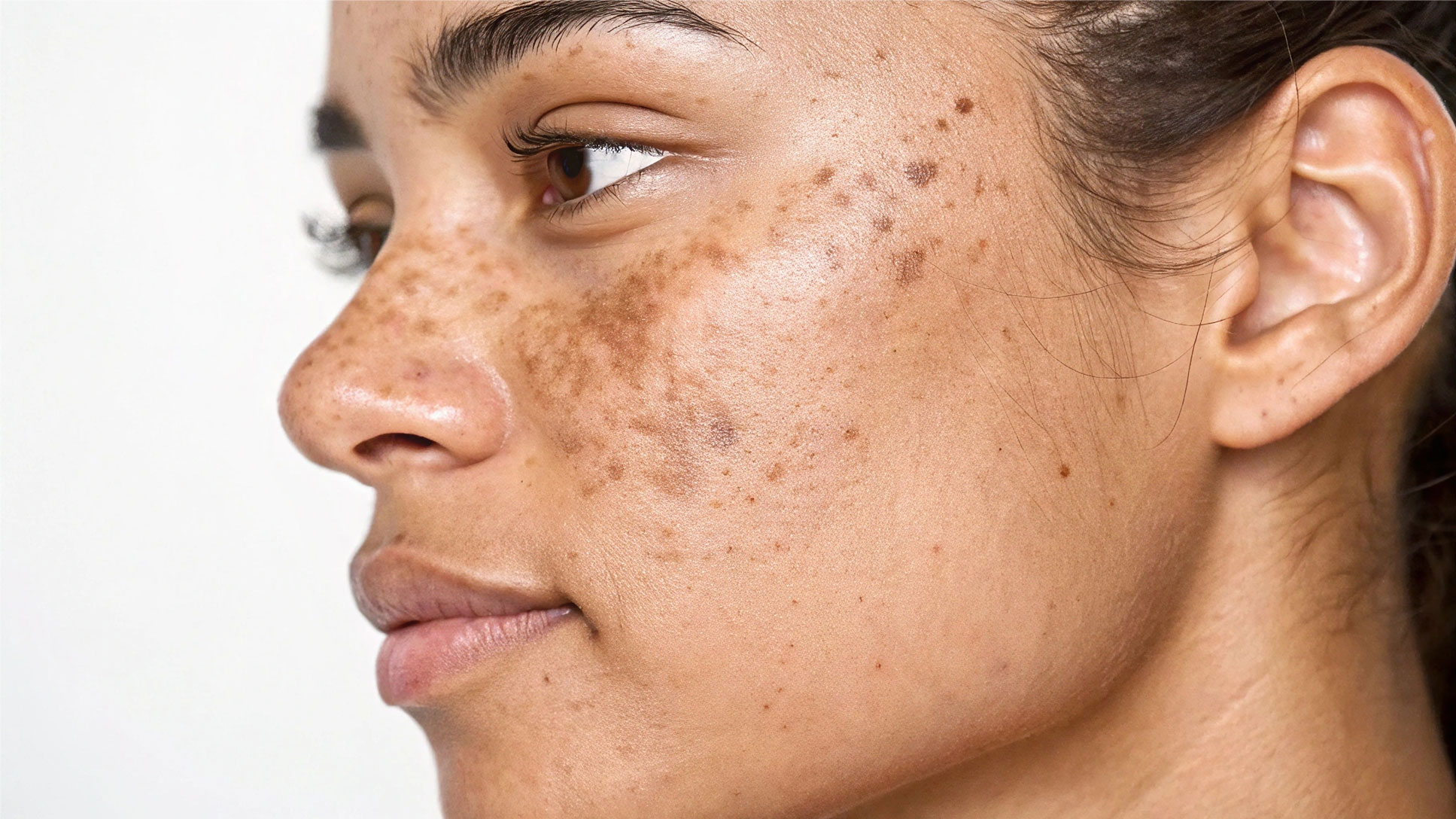
Understanding Melasma Triggers – How to Prevent and Manage This Common Skin Condition
Melasma is a common skin pigmentation disorder that causes dark patches to appear on the face, particularly on the cheeks, forehead, upper lip, and jawline. While melasma is harmless, it can be frustrating and difficult to treat, especially when the triggers are not fully understood.
At Skin & Beauty Bar, we help patients manage melasma with personalized skincare solutions designed to minimize discoloration and prevent further pigmentation. Read on to learn more about the most common triggers of melasma and how you can protect your skin from flare-ups.
What Triggers Melasma?
Melasma is caused by an overproduction of melanin, the pigment responsible for skin color. Several factors can stimulate melanocytes (pigment-producing cells), making melasma worse. The most common triggers include:
- Sun Exposure
- UV rays are one of the biggest culprits behind melasma flare-ups. Sunlight stimulates melanin production, which can cause existing melasma patches to darken and new ones to form. Even brief sun exposure without protection can make pigmentation more stubborn.
- ✔ Prevention Tip: Always wear broad-spectrum SPF 30+ sunscreen, even on cloudy days. Reapply every 2 hours and wear hats and sunglasses for extra protection.
- Heat (Even Without Sun Exposure!)
- Many people don’t realize that heat alone—not just UV rays—can worsen melasma. Exposure to hot weather, steam rooms, and even cooking over a hot stove can cause inflammation and trigger melanin production.
- ✔ Prevention Tip: Keep your skin cool with thermal water mists, avoid excessive heat exposure, and use antioxidant-rich skincare to help soothe inflammation.
- Hormonal Changes (Birth Control, Pregnancy, Menopause)
- Hormones play a major role in melasma development. This is why melasma is sometimes called the “pregnancy mask.”
- Birth control pills and hormone replacement therapy (HRT) can trigger melasma due to increased estrogen and progesterone levels.
- Pregnancy can cause a temporary increase in pigmentation, which may fade after childbirth—but not always.
- ✔ Prevention Tip: If you’re prone to melasma and taking hormonal contraceptives, talk to your medical provider about alternative options that may have less impact on pigmentation.
- Laser Treatments & Certain Aesthetic Procedures
- While many laser treatments are great for hyperpigmentation, some can worsen melasma by overheating the skin and triggering inflammation. Ablative lasers and IPL (Intense Pulsed Light) treatments can sometimes make dark patches even darker.
- ✔ Prevention Tip: If you have melasma, avoid heat-based treatments and opt for gentler, melasma-safe treatments like chemical peels, microneedling, or tranexamic acid therapy. Always consult with an experienced provider before undergoing any laser treatments.
How to Manage Melasma & Prevent Future Flare-Ups
✔ Daily Sun Protection – Wear sunscreen every day, even indoors.
✔ Hydration & Barrier Repair – Strengthen your skin with hydrating and antioxidant-rich skincare.
✔ Melasma-Safe Treatments – Avoid harsh lasers and opt for chemical peels, PRP therapy, or tranexamic acid-based treatments.
✔ Professional Consultation – A customized skincare plan can help manage your melasma and prevent worsening pigmentation.
Book Your Melasma Consultation at Skin & Beauty Bar
At Skin & Beauty Bar, we offer expert guidance and melasma-safe treatments to help you achieve a brighter, more even complexion. Book your consultation today and let us create a personalized skincare plan to keep your melasma under control!

